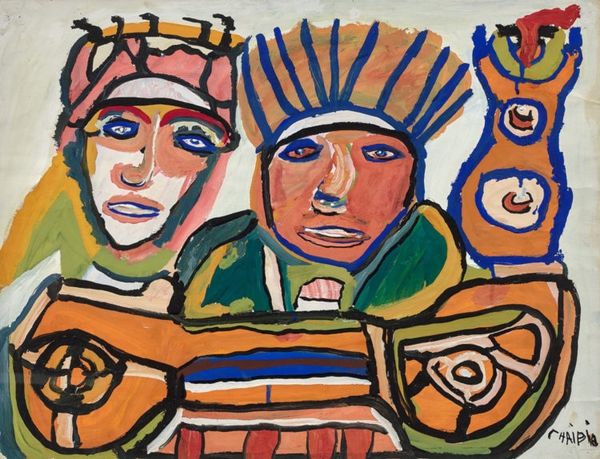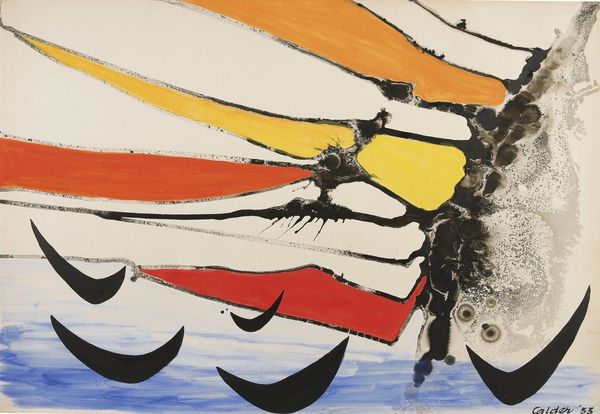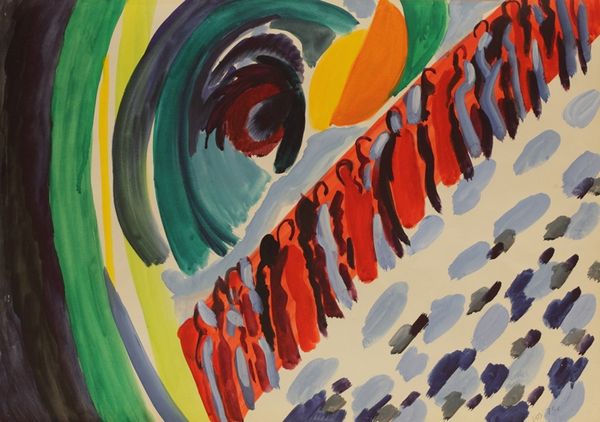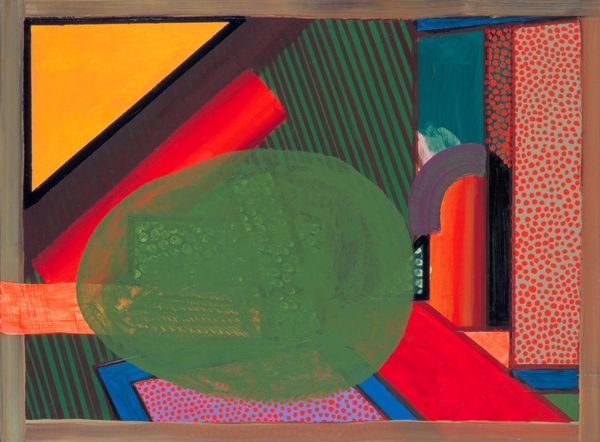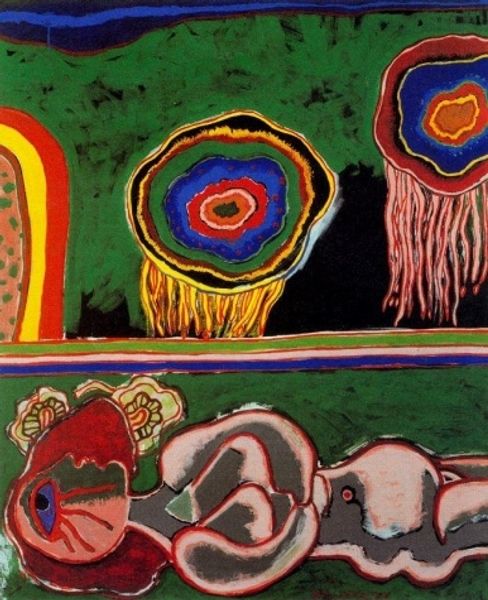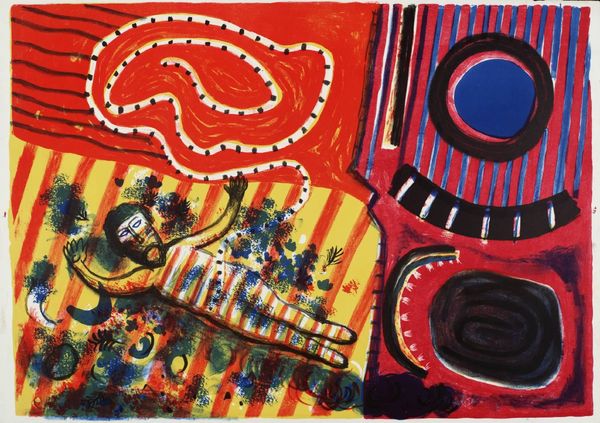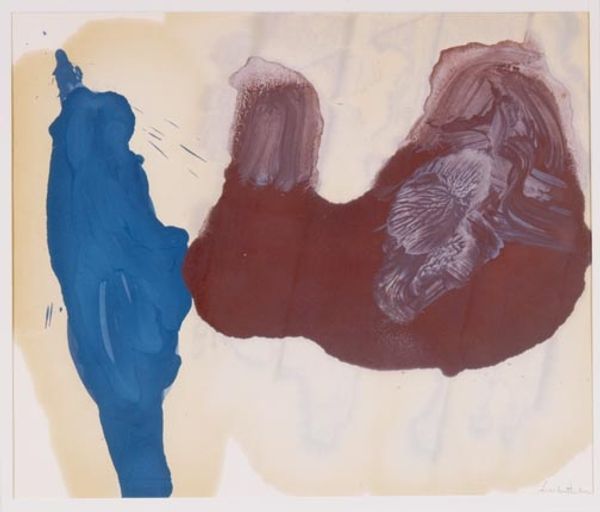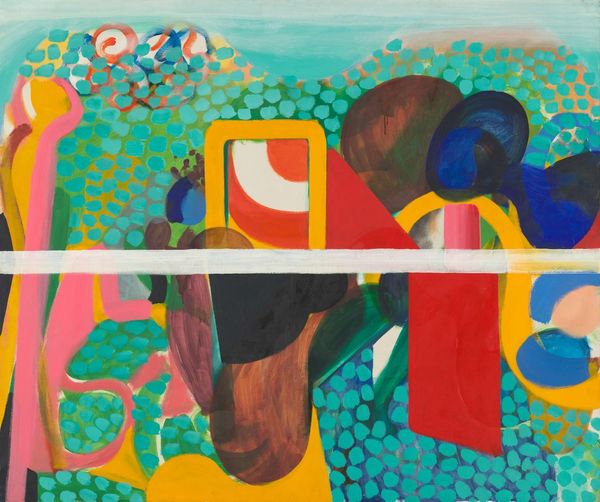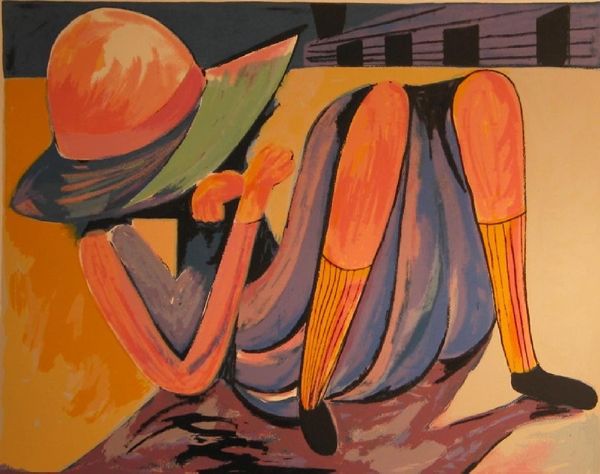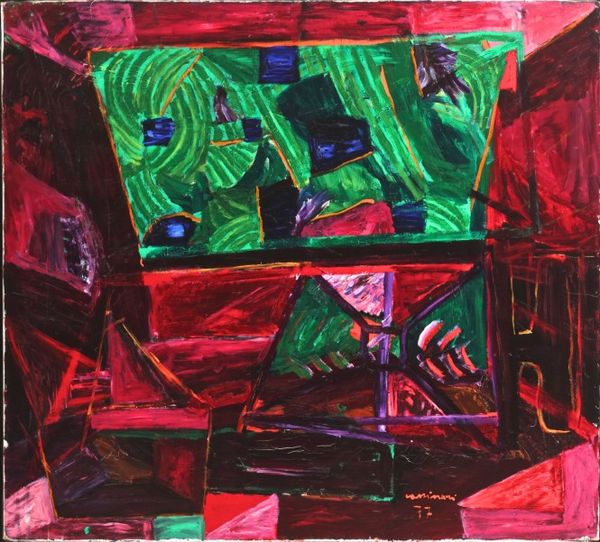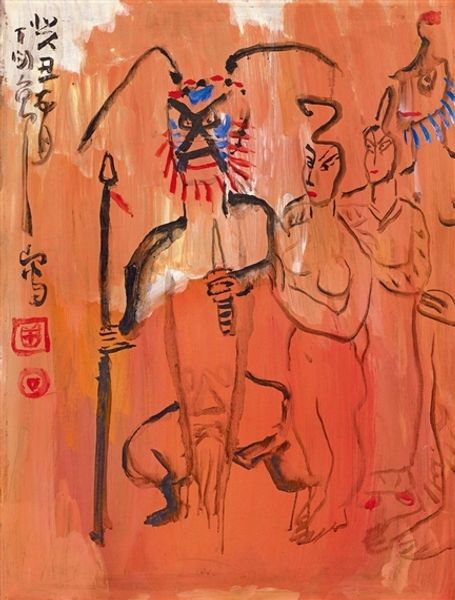
painting, acrylic-paint
#
portrait
#
contemporary
#
popart
#
narrative-art
#
painting
#
pop art
#
acrylic-paint
#
figuration
Copyright: Beatriz González,Fair Use
Curator: Standing before us is "Conjuro En San Andrés," an acrylic painting from 1988 by the Colombian artist Beatriz González. The work blends figuration with pop art elements, creating a striking scene. Editor: My immediate reaction is one of slightly uneasy calm. The colors are vibrant, yet there's a formality in the composition and figures that lends the work a serious tone. The characters appear rigid, not celebratory as the saturated palette suggests. Curator: Precisely, and this tension is at the core of González’s practice. Here, we are confronted by a composite portrait, likely based on photographic representations, which speaks to the enduring complexities of colonialism and the imposition of external religious and cultural frameworks onto indigenous populations. The landscape behind them evokes both paradise and isolation. Editor: I am drawn to the visual symbolism at play. Take the headwear, for instance. The sharp spikes evoke traditional headdresses but lack defining elements, feeling like a symbolic suggestion rather than an accurate depiction. Then we have what seems to be the garb of a cleric, marked by white lines against a rust color, a color suggesting the earth. Could the stark color difference highlight an enduring cultural clash? Curator: Absolutely. González often uses what some might perceive as ‘naive’ figuration to deliver astute and damning commentary on power structures. Her compositions may appear accessible on the surface, like illustrations, but they reveal how political trauma is ingrained into the cultural psyche. The painting is a conjuring, perhaps an invocation, or perhaps a depiction of historical, religious, or spiritual subjugation on San Andrés island. Editor: The color choices, especially the uncharacteristic lilac of the cleric, make him appear ghostly. There's an interesting use of flattened perspective, as if different realities are merging into one plane. Is González showing us the co-existence and perhaps a battle, between these beliefs? Curator: Undoubtedly. In "Conjuro En San Andrés," González reminds us that art serves not only to record, but also to question, to confront, and to provoke discourse around the legacies of cultural imperialism and resilience. Editor: This makes the painting, despite its formal simplicity, incredibly layered and worthy of deep consideration. It certainly offers plenty for visual analysis. Curator: Yes, Beatriz González has provided an image of an island reality loaded with complexities for which no simple visual translation exists. Thank you for joining me in parsing out these historical layers and visual components.
Comments
No comments
Be the first to comment and join the conversation on the ultimate creative platform.
